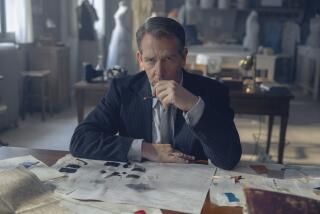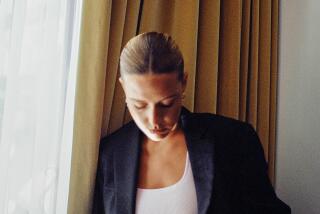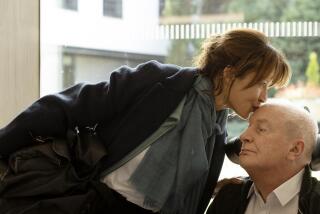In ‘Renoir,’ first wife Andree Heuschling is far more than footnote
The world of cinema mourned when Jean Renoir died in Beverly Hills in 1979 at the age of 84. One of the most influential directors of the 20th century, noted for such masterpieces as 1937’s “Grand Illusion,” 1939’s “Rules of the Game” and 1945’s “The Southerner,” the French filmmaker was widely embraced by the young Turks of France’s New Wave, including Francois Truffaut and Jean-Luc Godard.
But there was little notice seven months later when Renoir’s first wife, Andree Heuschling, who acted in his silent films as Catherine Hessling, died in France at the age of 79. After their divorce in 1930, she soon retired from acting and drifted into obscurity.
In French director Gilles Bourdos’ lush period film, “Renoir,” opening Friday, Heuschling is far more than a footnote. She is seen as a driving force in the life of not only Renoir, but also his renowned Impressionist painter father, Pierre-Auguste Renoir. Heuschling was the elder Renoir’s final model and inspired the younger Renoir to step out from his father’s shadow and become a filmmaker.
PHOTOS: Hollywood Backlot moments
The film stars veteran Michel Bouquet as Pierre-Auguste Renoir, Christa Theret as Heuschling and Vincent Rottiers as Jean Renoir.
“I made the film for Andree Heuschling,” Bourdos said during a recent phone interview (via a translator) from New York.
“She is someone who was the link — the junction between the world of painting and the world of cinema, and between the world of Renoir the father and Renoir the son,” he said. “I think by using her as a focal point, it enabled me to enter the world of these men. I don’t think, if I didn’t have her as a kind of junction, that I would ever have made a biographical film.”
When the teenage Heuschling arrived at the home of Pierre-Auguste Renoir at Cagnes-sur-Mer on the French Riviera during World War I, he was mourning the death of his wife and dealing with debilitating arthritis that had deformed his joints.
A free spirit who often posed naked for the elder Renoir — among the paintings she posed for was “Blonde a la Rose” — Heuschling “really gave Renoir the father the energy to want to paint and to live so he could continue to paint her,” Bourdos said.
“Here is a man who was able to create a world of beauty at a time when he was suffering physically, mourning the loss of his wife and dealing with the shock of having two sons fighting the war.”
His eldest son, the actor Pierre Renoir, lost his arm in the war. And Jean Renoir, who had returned home to recuperate from injuries, had nearly lost his leg in battle. He was also a lost soul.
PHOTOS: Celebrity portraits by The Times
“He was a very indecisive young man who was without any vocation,” Bourdos said. “It was a very difficult thing to grow up the son of an artist, particularly an artist of the importance of Renoir. What Jean needed was a trigger, something that would push him to focus on something, and in this case the trigger was Andree. I think if she had not arrived, Jean Renoir would most likely not have become a filmmaker.”
Heuschling may have inspired Renoir to direct, but his efforts to make her a star during their 10-year marriage failed. Their collaborations had mixed results with critics and suffered at the box office, especially the lavish 1926 “Nana.”
“He was poorly viewed by distributors in France at the time,” Bourdos said. “He was considered uncontrollable and too independent, and his wife was viewed even worse. He was considering giving up filmmaking.”
It was only after they divorced that Renoir found his voice as a filmmaker.
“That is the whole paradox of the story,” Bourdos said. “She was somebody who was necessary. She had to be the one who pushed him toward making cinema. She was the one who enabled him to separate himself and distinguish himself from his father. But at the same time, in order for him to develop as a filmmaker, he had to get rid of her and move on to the next stage.”
PHOTOS AND MORE
TIMELINE: Violence in movies
ENVELOPE: The latest awards buzz
PHOTOS: Greatest box office flops
More to Read
Only good movies
Get the Indie Focus newsletter, Mark Olsen's weekly guide to the world of cinema.
You may occasionally receive promotional content from the Los Angeles Times.









